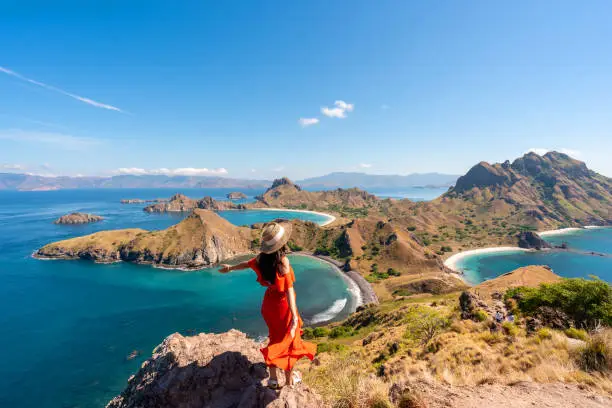Introduction
If you’re craving adventure that doesn’t cost the Earth, these eco friendly travel destinations are your gateway to sustainable experiences before the masses arrive. In this guide you’ll discover places that are pioneering renewable energy, protecting biodiversity, embracing local culture, and maintaining low environmental impact plus you’ll learn how to make every trip as green as possible. Whether you’re a seasoned eco traveler or just starting, these 15 destinations will inspire your next guilt‑free escape.
What makes a destination truly eco friendly travel? What criteria should you use?
From certification programs to sustainable infrastructure, the best eco friendly travel destinations share certain features:
- Environmental Conservation: High percentage of protected areas, national parks, marine sanctuaries.
- Renewable Energy & Low Carbon Footprint: Use of wind, solar, geothermal power; public transport, bike paths.
- Waste & Water Management: Recycling, composting, water‑conservation, zero or low single‑use plastic.
- Local Culture & Community Benefit: Locally owned lodges, fair wages, preserving cultural heritage.
- Certifications & Transparency: EarthCheck, Green Key, Global Sustainable Tourism Council standards.
These give you the core entity of what “eco friendly travel” means, associated entities are renewable energy, certifications, biodiversity, etc. The outcome: knowing these criteria helps you choose destinations that genuinely support eco friendly travel.
Why are more people demanding eco friendly travel now, and what trends are shaping the future?
People are increasingly aware of climate change, loss of biodiversity, and negative impacts of mass tourism. Recent data shows sustainable tourism is growing by hundreds of percent since 2020, and many travelers are willing to pay more for eco certified accommodations. WanderTheWorld+2World Tourism+2
Trends include: regenerative tourism (not just sustaining, but restoring ecosystems), “flight‑free” travel, local community empowerment, and destinations pushing for carbon neutral status. Knowing these trends helps you plan ahead and pick destinations before they’re overcrowded.
Which lesser‑known destinations are becoming top eco friendly travel spots?
Here are 15 destinations that are still somewhat under the radar but are rapidly gaining recognition for sustainable practices:
- Slovenia
- Finland (especially remote northern regions)
- Majorca, Spain
- Ecuador (Galápagos aside, inland Ecuador lodges)
- Bhutan
- Costa Rica (less‑visited corners)
- Norway’s fjord regions
- New Zealand’s South Island
- Palau
- Namibia
- Laos
- Madagascar
- Azores, Portugal
- Georgia (the country)
- Rwanda
For each, I’ll show what makes them rising eco friendly travel destinations: their associated entities (renewable energy, protected areas, wildlife, local community) and what you can expect, so you can pick based on your interest.
How can you verify eco friendly travel claims by a destination or accommodation?
To avoid greenwashing:
- Check for credible eco‑certifications like Green Key, GSTC, EarthCheck.
- Research destination’s infrastructure: public transit, renewable energy usage, waste management policies.
- Read reviews from travelers about actual practices, not just marketing.
- Use sources like GDS‑Index, global destination sustainability rankings.
What are the cost trade‑offs when choosing eco friendly travel destinations?
Eco friendly travel often comes with trade‑offs:
- Sometimes higher upfront cost: eco lodges can be more expensive.
- Possible remoteness: harder to reach, limited transport.
- Fewer luxury amenities.
- Seasonal access issues.
But the outcome: more meaningful, lower‑impact travel, and often money better spent supporting local economies.
How should you plan transportation and get there with minimal environmental impact?
- Choose flight routes with fewer layovers; aim for airlines with carbon offset programs.
- Use train, bus, ferry where possible once in region.
- Fly to regional hubs and then travel overland.
- Travel slow: stay longer in fewer places.
What are the best practices for being a responsible eco friendly traveler onsite?
- Stay in certified eco accommodations.
- Reduce single‑use plastics.
- Respect wildlife and natural habitats.
- Support local communities (e.g. use local guides, buy local).
- Leave no trace: trails, campsites, beaches.
When is the best time (season) to visit eco friendly travel destinations to avoid crowding & minimize impact?
- Go during shoulder seasons (just before or after peak) fewer crowds, lower strain on resources.
- Avoid peak tourist months.
- Check local wildlife seasons so you don’t disturb breeding or migration.
How do destination policies and government actions affect eco friendly travel?
- Government support for sustainability (protected parks, renewable energy investment).
- Regulations on tourism capacity, limits on resorts or developments.
- Incentives for eco lodges and sustainable tourism operations.
How can you balance adventure & comfort while remaining eco friendly?
You don’t have to give up comfort:
- Eco resorts that are luxurious but with sustainable design.
- Glamping rather than rough camping.
- Choose tours that are ethical but still well organized.
What hidden gems offer extraordinary experiences in eco friendly travel?
This covers destinations you may not have heard of yet, but are extraordinary:
- Details of a few places: remote islands, biodiverse regions, community‑led lodges, etc.
What are the biggest challenges for eco friendly travel and how are they being addressed?
- Overtourism, habitat degradation.
- Greenwashing, false claims.
- Restricted access, infrastructure challenges (roads, electricity).
How many destinations are implementing measures: e.g. limiting tourist numbers, stricter certification, visitor education.
Conclusion: How to choose your perfect eco friendly travel destination & take action
Summarize: use the criteria, evaluate trade‑offs, use policies & seasons, balance adventure & comfort. Provide a checklist or decision‑guide. Encourage action: pick one of the 15, plan in advance, travel with low impact.


One Comment